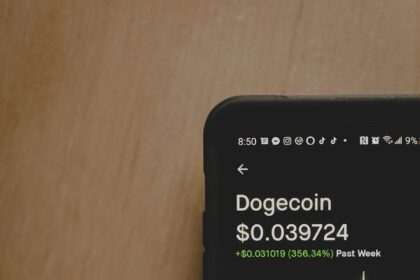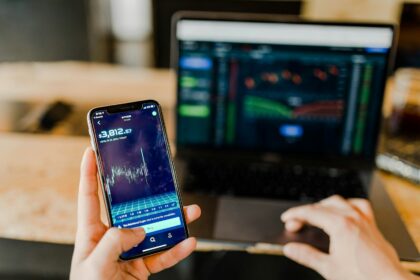Transform your writing abilities into steady earnings by exploring freelance opportunities, content creation, or self-publishing. Platforms like Medium, Substack, and Amazon Kindle Direct Publishing allow authors to reach audiences while generating royalties and subscription fees. Consistent output combined with targeted niche topics can significantly boost monthly returns.
Leveraging musical expertise offers multiple income streams such as licensing tracks for commercials, teaching lessons online, or performing at local events. Websites like SoundCloud and Bandcamp help musicians showcase original compositions and receive payments directly from listeners or clients seeking unique soundtracks.
Visual art and design skills can be turned into profitable ventures through custom commissions, selling prints on marketplaces like Etsy, or designing digital assets for businesses. Building a portfolio on social media channels attracts clients interested in logos, branding materials, or personalized artwork that commands competitive pricing.
Creative income: artistic talents for profit
Monetizing your abilities in writing, design, or music requires strategic use of platforms and technologies that connect creators with audiences willing to pay for unique content. For instance, blockchain-based marketplaces enable artists and writers to tokenize their work as NFTs (Non-Fungible Tokens), creating verifiable scarcity and ownership that increase revenue potential beyond traditional sales.
Understanding the technical mechanisms behind cryptocurrency payments and smart contracts is crucial for securing consistent earnings from digital creations. Smart contracts automate royalty distributions, ensuring ongoing compensation each time a piece is resold or licensed, which benefits musicians distributing beats or designers selling exclusive visuals.
Utilizing decentralized platforms for side earnings
Platforms like Audius provide musicians with transparent streaming revenue models powered by blockchain technology. Unlike conventional services where payouts are often delayed and opaque, these systems offer near real-time payments directly to creators’ wallets. This model exemplifies how integrating technical tools can improve financial outcomes from musical compositions.
Similarly, writers can employ platforms such as Mirror.xyz that facilitate crowdfunding through tokenized access to articles or serialized works. By issuing tokens tied to their publications, authors engage supporters who gain ownership stakes alongside direct monetary contributions. This approach diversifies sources of supplemental revenue beyond ad-driven models.
- Design professionals benefit from marketplaces like OpenSea or Rarible by minting limited-edition digital art pieces secured on Ethereum blockchain.
- Musicians utilize royalty-tracking smart contracts embedded in NFT releases to automate fair payment splits among collaborators.
- Writers explore token-gated content strategies enabling subscription-like models with built-in transparency via decentralized ledgers.
The integration of cryptographic assets with creative production not only enhances income streams but also provides greater control over intellectual property rights. Detailed analytics tools available on these platforms assist creators in optimizing pricing strategies based on demand patterns and secondary market activity.
Monetize Digital Art Platforms
To generate revenue through digital art platforms, creators should prioritize leveraging blockchain-based marketplaces such as OpenSea, Rarible, and Foundation. These platforms enable direct sales of unique digital creations as Non-Fungible Tokens (NFTs), ensuring provenance and ownership are securely recorded on the blockchain. Utilizing these services allows designers to bypass traditional intermediaries and receive royalties automatically with each secondary sale via smart contracts.
Artists can also increase earnings by integrating their work into metaverse environments like Decentraland or The Sandbox. These virtual spaces offer opportunities for displaying and selling interactive designs, expanding audience reach beyond conventional galleries. Incorporating augmented reality (AR) or virtual reality (VR) elements enhances engagement, making the showcased creations more appealing to potential buyers seeking immersive experiences.
Technical Strategies for Maximizing Revenue Streams
Effective monetization requires understanding token standards such as ERC-721 and ERC-1155, which govern how digital assets are structured on Ethereum-compatible blockchains. ERC-1155 tokens support batch transfers and lower gas fees, beneficial for creators releasing multiple editions of a design. Selecting the appropriate standard influences transaction costs and user accessibility, impacting overall returns.
Creators should also consider multi-platform listing tools like Mintable or Cargo that facilitate simultaneous distribution across various marketplaces. This approach increases visibility and reduces the time spent on manual uploads. Employing analytics dashboards integrated within these platforms helps monitor buyer demographics and pricing trends, allowing strategic adjustments to maximize sales efficiency.
- Smart contract customization: Tailoring royalty percentages ensures ongoing compensation from resales without further effort.
- Collaborations with brands: Partnering with businesses for exclusive drops expands exposure beyond typical collector circles.
- Limited edition series: Creating scarcity drives demand and justifies higher valuation of digital works.
Writing engaging narratives around each piece adds significant value by connecting audiences emotionally to the creation process. Detailed descriptions outlining inspiration, techniques employed, or technological innovations behind the project enhance perceived uniqueness. Storytelling bridges the gap between creator intent and consumer appreciation, often translating into stronger purchasing incentives.
In conclusion, combining technical proficiency in blockchain protocols with thoughtful presentation strategies empowers content producers to effectively monetize their visual expressions online. Continuous adaptation to emerging tools while maintaining authentic communication fosters sustainable revenue generation within this evolving ecosystem.
Sell Handcrafted Products Online
To successfully market handcrafted items on the internet, focus on clear presentation and detailed descriptions that highlight unique design features and the creator’s skill set. Platforms such as Etsy, Shopify, and BigCommerce offer robust tools for showcasing products through high-resolution images and customer reviews, which can significantly enhance buyer trust. Incorporating targeted keywords related to specific crafts–like jewelry making, woodworking, or textile art–improves search visibility and attracts niche audiences interested in specialized creations.
Integrating blockchain technology into the sales process can add transparency and authenticity verification for buyers. Using non-fungible tokens (NFTs) linked to physical products provides a digital certificate of ownership and provenance. This approach is particularly effective for limited-edition art pieces or custom-designed goods where originality is critical. Smart contracts embedded in these NFTs enable automated royalty payments to creators upon resale, ensuring continuous revenue streams aligned with the creator’s skills in design and production.
Utilizing Diverse Creative Disciplines
Expanding beyond traditional crafting by incorporating writing or music elements can diversify product offerings and increase appeal. For example, pairing handcrafted musical instruments with original compositions or instructional content adds value that justifies premium pricing. Similarly, artisans producing visual artwork may include written narratives about their inspiration or creative process to engage customers emotionally. This multidisciplinary approach leverages multiple artistic capabilities to create richer consumer experiences and broaden commercial potential.
Practical steps for newcomers include establishing consistent branding that reflects artistic identity across all communication channels–social media profiles, websites, newsletters–and utilizing analytics tools to track engagement metrics and optimize marketing strategies. Case studies demonstrate that sellers who combine strong storytelling with technical accuracy in product specifications tend to achieve higher conversion rates. Moreover, collaborations between designers and writers or musicians can yield innovative products that attract diverse customer segments while enhancing overall market reach.
Offer Freelance Design Services
Start by identifying your strongest skills in visual creation, whether it’s graphic design, music production, or writing. Offering specialized services such as logo creation, sound editing, or copywriting allows you to target specific client needs effectively. Platforms like Upwork and Fiverr provide detailed analytics on project types and budgets, helping freelancers optimize their offerings for better returns.
Monetizing creative outputs requires understanding market demand and pricing strategies. For instance, freelance designers who integrate blockchain-based copyright protection can safeguard their work while enhancing its value. Smart contracts enable automatic royalty payments whenever the design is resold or reused, ensuring sustainable revenue streams beyond initial sales.
Technical Approaches to Expanding Your Client Base
Leveraging decentralized platforms that connect creators directly with clients eliminates intermediaries and reduces commission fees. NFT marketplaces such as OpenSea allow visual artists and musicians to tokenize their creations, providing proof of authenticity and unique ownership rights. This approach not only diversifies income sources but also attracts tech-savvy customers interested in digital collectibles.
- Design: Offer branding packages including vector logos, style guides, and promotional materials optimized for both print and digital channels.
- Music: Provide custom beats or jingles tailored to advertising campaigns or multimedia projects.
- Writing: Create content ranging from technical documentation to engaging blog posts targeted at niche markets.
Regularly updating your portfolio with case studies demonstrating measurable results–such as increased user engagement through UI improvements or enhanced audio clarity in podcast production–builds credibility. Including client testimonials alongside quantifiable data establishes trust and justifies premium rates.
To streamline project management and communication with clients worldwide, utilize integrated tools like Trello combined with encrypted messaging apps supporting end-to-end security. These methods ensure confidentiality while maintaining transparency about progress milestones and deadlines. Such professionalism contributes significantly to repeat business and long-term partnerships within the creative sector.
Create and Sell Art Tutorials
Monetizing your expertise in art, music, or writing through tutorial creation is a practical approach to generating revenue. By structuring clear, step-by-step guides that target specific skills–such as watercolor techniques, music theory basics, or creative writing prompts–you can attract learners seeking actionable knowledge. Platforms like Udemy, Skillshare, and Patreon enable creators to upload video lessons or written content and receive compensation based on subscriptions or course purchases.
Technical quality plays a significant role in tutorial success. High-resolution videos paired with clean audio improve engagement, while well-organized lesson plans facilitate gradual skill development. For example, an artist teaching digital illustration might begin with software navigation before advancing to complex shading methods. Incorporating downloadable resources such as practice files or worksheets enhances learner interaction and encourages repeated use of the material.
Strategies for Maximizing Tutorial Reach and Earnings
Optimizing tutorials for search engines increases visibility across educational platforms. Including relevant keywords–like “portrait drawing techniques” or “songwriting structure”–in titles and descriptions helps potential students find your content more easily. Additionally, leveraging social media channels to share snippets or tips can draw attention from niche communities interested in visual arts or musical composition.
A technical case study involving a professional illustrator showed that releasing a series of short tutorials (5-10 minutes each) on specific topics generated higher sales than longer single-session courses. This modular format allows learners to purchase lessons individually according to their needs. Similarly, writers offering sequential lessons on character development and plot construction reported increased subscriber retention when incorporating interactive Q&A sessions.
To further diversify revenue streams, consider integrating blockchain technology by issuing non-fungible tokens (NFTs) linked to exclusive tutorial content or personalized feedback sessions. This method provides verifiable ownership and scarcity for digital educational products, attracting collectors and dedicated learners alike. Combining traditional tutorial platforms with decentralized marketplaces opens new avenues for sustainable earnings in creative sectors.
Leverage Social Media Marketing
To maximize returns from artistic endeavors such as music, writing, and design, integrating social media marketing with blockchain tools is a strategic move. Platforms like Instagram and TikTok enable creators to showcase their work directly to target audiences, while smart contracts on Ethereum or Solana can automate royalty distributions and secure transparent transactions. This combination reduces intermediaries, increasing the share of revenue flowing back to the creator’s skill set.
Analyzing engagement metrics through decentralized analytics tools allows creators to fine-tune content strategies based on real-time feedback. For instance, musicians releasing NFTs linked with exclusive social media content create new monetization channels beyond conventional streaming services. Writers and designers can similarly leverage token-gated communities that encourage direct patronage and recurring support through subscription models enabled by blockchain protocols.
Key Insights and Future Directions
- Tokenization of Work: Artists converting pieces into NFTs gain not only upfront payments but potential royalties on secondary sales, enhancing long-term earnings tied to the value of their output.
- Data-Driven Content Optimization: Leveraging AI-powered analytics integrated with social platforms helps identify which creative outputs resonate most, refining promotion efforts for maximum conversion rates.
- Decentralized Monetization Models: Emerging DAO frameworks allow groups of creatives across disciplines–music production, literary projects, visual design–to collaboratively fund and distribute rewards transparently.
The trajectory clearly points toward greater autonomy in how musicians, writers, and designers convert their expertise into sustainable revenue streams. As blockchain interoperability advances alongside evolving social algorithms, creators will have more sophisticated tools to amplify reach while maintaining control over licensing and distribution rights. Understanding these technical possibilities empowers individuals to transform their passion into ongoing financial growth through innovative digital ecosystems.





